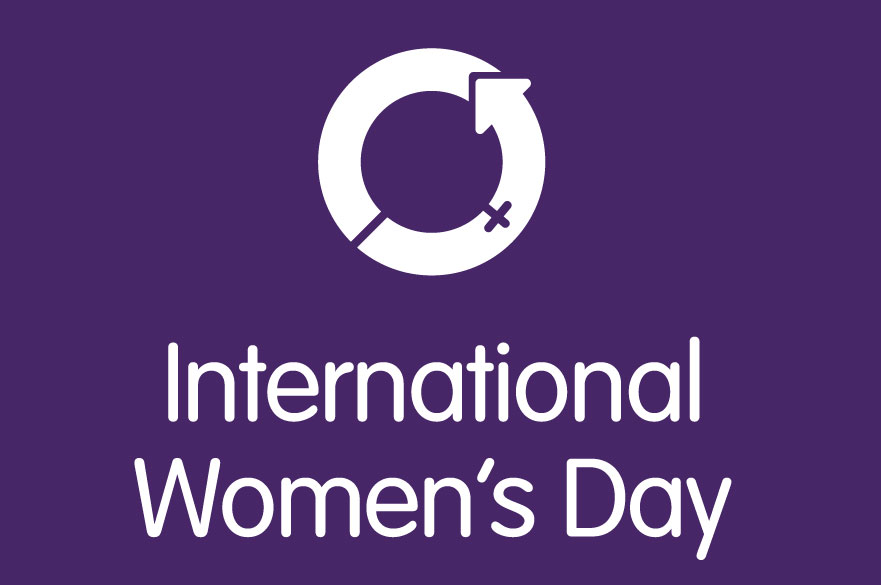International Women's Day is a day to celebrate the social, economic, cultural, and political achievements of women but it is also day to highlight the need to accelerate women's equality.
At Scantec we specialise in recruiting across a range of technical, engineering and scientific sectors; industries that are traditionally male dominated and with under-representation of women. However, many of these sectors are also skills short and with growing demand for talent from entry level to senior leadership roles there is much debate around the topic of how to encourage and inspire more women to enter and reach their potential within these professions.
Some startling stats that I’ve read include that only 1% of engineering and technology undergraduates in the UK are female and according to the Women’s Engineering Society, only 12% of engineers in Britain are female. Within the construction sector, while the industry employs around 3 million people in the UK, very few of these roles are occupied by women. In fact, data from the Office for National Statistics states that only 13% of the UK’s construction workers are female and, on average, they are paid 12% less than their male employees counterparts. STEM fields also typically have fewer women on boards than other industries.
However, while we are talking stats, it is widely regarded that companies are 15% more likely to perform better if they are gender diverse.
Engineering, technology, science and construction shape the world around us and play a critical role in addressing some of the greatest global challenges that we face – from infrastructure to climate change to Covid, so by inspiring more women from all parts of society to consider a career in these sectors, collectively we have the opportunity to create more diverse and inclusive professions which can better serve society.
Many girls and young women today have a real choice to study technical, maths and science courses, as well as the encouragement to pursue careers in engineering and technical fields through the work that has been done to promote STEM subjects and while there is still a long way to go, vast inroads have been made over the years.
Many women who paved the way for others to enter these professions years and decades ago had neither the opportunities or support on their side. However, they managed to shake up the world in all sorts of ground-breaking ways.
The theme of International Women’s Day this year is #ChooseToChallenge. We can all choose to challenge and call out gender bias and inequality in order to help create an inclusive world.
So today we choose to celebrate women who challenged the stereotypes to forge remarkable careers and achievements in traditionally male dominated sectors including scientific, construction and engineering fields and who contributed ground breaking ideas to science, technology and our daily lives.
By sharing a few of these success stories, we’d love to inspire more women to pursue careers and progression within these technical industries. So here are the stories of some trailblazing women whose innovations, passions and achievements have improved our world in various ways:
Sarah Guppy (1770 – 1852)
Sarah Guppy contributed to the design of Britain's infrastructure, and in 1811 she patented the first of her inventions, a method of making safe piling for bridges. Although, she gave the design away for free as she believed women shouldn’t be “too boastful”.
Sophie Germain (1776- 1831)
Sophie Germain's work in number theory was pivotal to the applied mathematics used in the construction of skyscrapers today.
Ada Lovelace (1815- 1852)
Ada Lovelace was an English mathematician who is credited with inventing the first basic system of computation that would later be used in computer languages and programming. Her experiments with Charles Babbage's Analytical Engine led to her developing the first algorithms.
Margaret Knight (1838 –1914)
Margaret demonstrated an aptitude for innovation from an early age. After observing an accident at a textile mill at the age of 12, she invented a device that would automatically stop a machine if something got caught in it. By the time she was a teenager the invention was being widely used in mills. Later in life, Margaret went to work in a paper bag plant and while working there she thought how much easier it would be to pack items in paper bags if the bottoms were flat (they were not at the time). This inspired Margaret to create a machine that automatically folded and glued paper-bag bottoms – creating the flat-bottom paper bags that are still used to this very day and eliminating the need for workers to assemble them slowly by hand. Margaret went on to achieve over 20 patents and almost 100 different inventions including a rotary engine, shoe-cutting machine and a dress and skirt shield.
Marie Curie (1867- 1934)
Marie Curie is probably one of the most well-known, pioneering women in history but for those who may not be aware of her achievements, Marie Curie was the first scientist to isolate polonium and radium, establishing the nature of radiation and beta rays. She was the first woman to be awarded a Nobel Prize and the first person to be honoured in two different scientific disciplines - physics and chemistry. Her work led to the development of the X-ray and research into atomic particles.
Irene Barclay (1894–1989)
In 1922, Irene Barclay became the first female Chartered Surveyor in Britain and was one of the key social reformers of the 20th century for her work, improving housing conditions in the slums of St. Pancras.
Katharine Burr Blodgett (1898-1979)
Known for her contributions in the field of industrial chemistry, Katherine Blodgett is credited with the invention of non-reflecting or invisible glass. As the first female scientist hired at General Electric, Katharine figured out a way to transfer thin monomolecular coatings to glass and metals in 1935 created glass that excluded glare and distortion. It has since been used in glasses, picture frames, camera lenses, optics and microscopes.
Maria Telkes (1900-1992)
Maria Telkes teamed up with architect Eleanor Raymond to build the first ever home that was entirely heated by solar power in 1947. She invented the thermoelectric power generator to provide heating for Dover House in Scotland. She used Glauber’s salt, sodium salt from sulfuric acid in order to store heat in extreme winters.
Grace Hopper (1906-1992)
Dr. Grace Murray Hopper is an inspiration for women in the field of computer science. She, along with Howard Aiken, invented Harvard’s Mark I computer in 1944. The computer was the size of a room and weighed five tons. Grace played a pivotal role in compiling and translating written language into computer code and was part of the team that developed COBO which was the first modern, user-friendly programming language. She is also accredited for coining the terms ‘bug’ and ‘de-bug’ after discovering that an actual moth was the cause of trouble in her computer.
Hedy Lamarr (1914 –2000)
Hedy Lamarr was an American film actress and a female inventor during the World War II era. She worked alongside George Anthiel to develop a secret communications language against the Nazis. Her developments were some of the first in the field of wireless communications. The influence of her work showed that communications could be made on a private and wireless frequency and laid the technological foundations for modern day Wi-fi and GPS as well as her further contributions to the ‘spread spectrum’ technology which also facilitated the digital communications boom including the invention of cellular phones, fax machines and other wireless operations.
And finally, bringing us back to the modern day, female scientists from across the world have played lead roles, working day and night to develop a Covid vaccine to end the current crisis that we face.
Özlem Türeci
Alongside her husband Ugur Sahin founded BioNTech and working with Pfizer developed the first Covid vaccine to be approved by the UK government while a team led by Professor Sarah Gilbert at the University of Oxford was also among the first in the world to move into human trials before being approved globally. The World Health Organisation’s chief scientist, Indian paediatrician Soumya Swaminathan, has been co-ordinating international work on vaccine development. And leading the American government’s efforts to develop a vaccine, at the age of just 34, has been Dr Kizzmekia Corbett, an immunologist with the National Institutes of Health.
These inspirational women are just a few of those who have helped shape our daily lives and who chose to challenge gender stereotypes, enabling change. As we choose to challenge this International Women’s Day we can continue to drive change and put diversity and inclusion firmly on the agenda.
#IWD2021 #choosetochallenge #STEM #scantec







